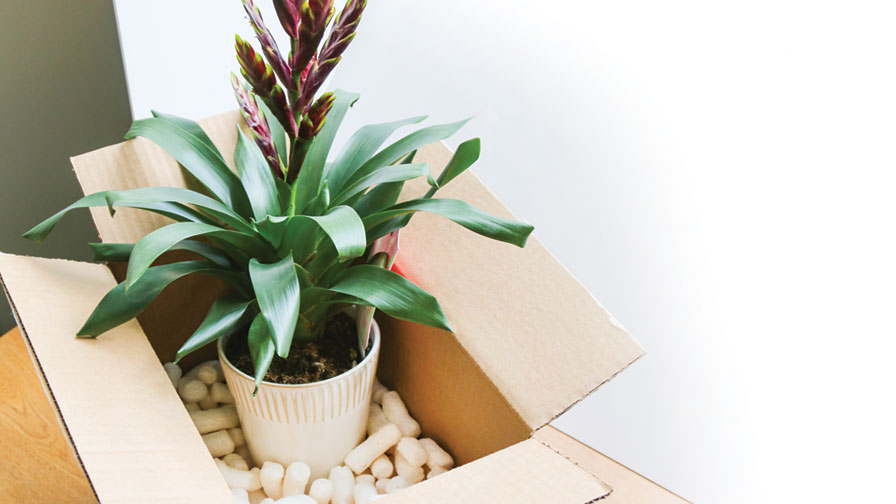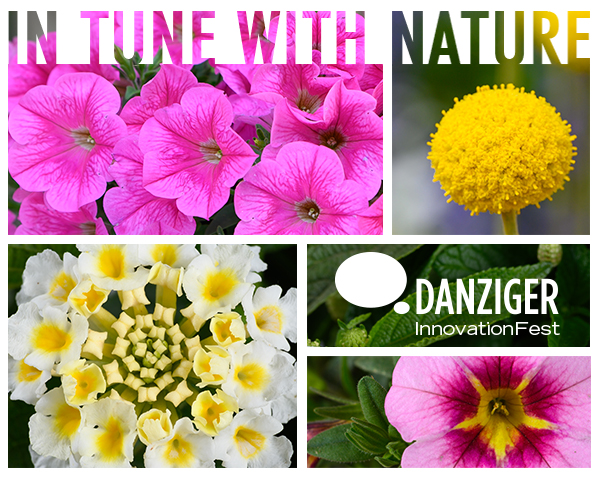Amazon is Coming to Plant Retail; Here’s What it Means for Growers
 When rumors began swirling last year that Amazon was launching an online plant sales program, the question on everyone’s mind was if the online juggernaut would finally accomplish what no one else has done: make online plant sales a significant portion of the industry.
When rumors began swirling last year that Amazon was launching an online plant sales program, the question on everyone’s mind was if the online juggernaut would finally accomplish what no one else has done: make online plant sales a significant portion of the industry.
There are valid arguments for and against Amazon figuring out how to drop ship massive amounts of live plants. Even if the program isn’t the homerun Amazon hopes it will be, it is likely to, at minimum, lay the groundwork for widespread sales.
Amazon’s entry into the industry is significant, since the company understands online sales in a way no one else does.
It’s hard to underestimate the consumer reach of online sales. In 2015, online retail sales were $1.5 trillion; they’re expected to reach $5 trillion by 2020, according to a Fox Business article by Motley Fool’s Joe Tenebruso.
As big as you think Amazon is in that trend, you’re probably thinking too small. It’s giving even Google a run for its money, Tenebruso says. Initial product searches on Amazon rose from 44% in 2015 to 55% in 2016, he says. During the same timeframe, initial product searches on Google dropped from 34% in 2015 to 28% in 2016.
Although plant sales have not yet been significant, it’s the potential sales that growers should pay attention to. Past performance isn’t a good predictor when markets are still developing, says Sid Raisch, CEO of Bower & Branch, an e-commerce site for trees and shrubs.
“The problem with being ahead of the market is there is no market,” he says.
As Tenebruso’s figures show (which were gleaned from reputable research firms), consumer interest in e-commerce is still in a rapid growth phase. And that matters.
What does that mean to growers? Here are five issues that will have the biggest impact on you.
1. Think About Adding a Drop Shipment Department
The most obvious change you will need to make for e-commerce is to dedicate space at your dock for room to pack individual shipments.
Flowerwood Nursery, which has several locations throughout the Southeast, ships for Amazon, as well as HomeDepot.com.
“We box the plants, use the appropriate bag, and then UPS picks it up,” says Todd Carnley, Vice President of Sales and Marketing at Flowerwood.
The boxes he uses are a heavy enough cardboard to help protect the plants during shipment. The plastic bag is used to trap soil and moisture.
E-commerce sales can be to locations across the country, beyond where you may already supply. So growers need to be aware of shipping restrictions for individual states.
Flowerwood has experimented with which plants are best for online sales. As a producer of woody ornamentals, Flowerwood sells plants in 7-gallon pots. After briefly experimenting with shipping plants that large, it decided to stick primarily with 3- to 4-gallon plants. The weight made shipping tricky.
2. Pick out the Right Plants to Ship
Most greenhouse growers will not need to worry about 7-gallon plants. But plant selection for e-commerce still needs careful consideration.
“Not only will growers need to select products that ship well, they’ll need to understand the threshold of when and when not to ship,” says Stacey A. Noble, Program Implementation Manager, Ball Horticultural Company. “For example, growers cannot send petunias in full bloom to consumers because the blooms will fall off.”
Ball’s Burpee Seed line is currently partnering with a grower to promote its products online. It works closely with its grower partner to develop the offerings, provide content, and help with marketing on Amazon, Noble says.
Looking ahead, Noble sees breeders considering drop shipping in developing new varieties.
“How a plant holds up in a box may be a new criterion for breeders to focus on,” she says.
The other aspect of e-commerce is that growers will need to track and analyze sales.
“Are they getting hits? Are they not selling?” says Cynthia Hanauer, Founder of GrandCentralFloral.com, a business-to-business news and education website. She is an expert in the floral industry, where e-commerce has long been the norm.
“You’ll need someone who analyzes things. And you’ll want someone on staff with web marketing skills,” she says. “They will want to make sure orders don’t come in without inventory to back them up. You will also need to take down the item once it’s gone. You can always start shipping something else.”
3. Your Costs Will Be Different
The norm for online sales is that the customer pays for shipping. But that’s just the UPS bill. There’s a lot more that growers will want to track so they cover their costs in the price.
You will take on more shrink and higher labor needs. So current wholesale costs won’t cut it.
Take something as simple as returns. For Flowerwood, the returns for online are about two to three times the number of returns from retail customers, Carnley says.
Labor, however, is the bigger expense you’ll want to track. It’s not just the staff packing shipping boxes (which will need a dedicated staff to stuff plants in a bag, then boxes).
“It’s more expensive as a nursery to pull out one plant versus 100,” Carnley says.
Not only may it take 15 minutes of labor to pull the inventory, there’s also the equipment and fuel being used less efficiently.
Growers will be setting their prices for online sales, which could pose a danger, as many growers are not charging enough to make a profit, according to a survey Greenhouse Grower conducted on pricing in 2016.
4. Consumers Will Be More Central to Your Strategy
When you drop ship directly to a customer’s home, you aren’t shipping plants to the pros you’re used to working with. That means you need to manage expectations and offer a lot more handholding.
You’ll want to both market your plants differently and provide more care instructions than you normally would.
The customer base that is most prone to purchase online are people under 50 years old. Research conducted by Greenhouse Grower and Michigan State University since 2012 confirms what most green industry professionals suspect: most consumers do not understand many basics about gardening.
That makes product descriptions and plant-care tags even more important.
“In an instant gratification world, we must convey the message that the plant will grow and produce a beautiful bloom, tomatoes, or herbs in the future,” says Noble. “We need to give the consumer the satisfaction and confidence that the plant they receive will return a favorable result either with great coloring, high yield, good flavor, etc. Content is king for online listing; if you don’t have the right content for the platform, it’s going to be very hard to get an item listed and sold. Content is the merchandising in the online landscape.”
Here’s something to think about: If the only photos of the plant on Amazon are those beautiful, fully mature images, then that’s what customers expect will arrive on their doorstep.
“It’s the old analogy,” Carnley says. “You order an oak tree and you get an acorn.”
That’s why “as-shipped” images are important, Noble says.
“It’s about realistic expectations,” Raisch says. “That’s the biggest factor in that list of things we’ve had to learn. I think it bridges the gap between consumer expectations and reality. Once you establish that, they trust your brand at that point.”
5. Online Sales Can Affect Your Retail Customers
Currently online sales target niche areas — plants not currently sold by your customers and consumers who live in non-competing areas. But if this takes off, you can be cutting your retail customers out.
How will you manage that? Figuring that out will be as important for Amazon growers who sell to The Home Depot as it is for those selling to local garden centers.
Burpee and its partner grower are carefully threading that needle.
“[We] are trying to find unique offerings that aren’t available in brick and mortar. To maintain price points that work with shipping charges and the cost of the grow-outs, it will be important to have offerings that consumers can’t find in stores.”
Carnley says for Flowerwood, it’s mostly selling varieties that aren’t in its brick-and-mortar customers’ stores. It also has customers in more remote areas.
If online plant sales truly take off, however, it may be impossible to avoid competing with your other customers.
“It’s a threat to independent garden stores,” Raisch says. “That’s why they’re investing and going online quickly as a means to keep their customers. If customers want to shop online at night, they want to keep them happy.”
Is E-commerce in Your Future?
The question you’ll want to ask yourself is where you want to be if online sales take off.
Obviously, traditional sales to mass merchants and independents aren’t going away. Yet if you think consumers will migrate to online sales in a significant way, do you want in on those sales?
If so, Hanauer has another question for you: “Don’t you want to be in the front door a little bit?”
Carnley agrees, although he’s a little skeptical about how quickly online sales will take off.
“I don’t think the consumer is going to change that quickly,” he says. “Maybe I’m wrong. But I also don’t want to close my eyes and say that’ll never happen.”
Will Amazon Succeed Where Others Have Faltered?
Below we layout the arguments for and against Amazon’s long-range success in online live plant sales. Which side are you on?
It Will Transform the Industry
1. Amazon is Amazon. It’s huge, and really connected to consumers. “Think about this phenomenon: 84% of holiday shoppers are going straight to Amazon,” says Cynthia Hanauer, founder of GrandCentralFloral.com, a B-to-B news and education website.
Moreover, Hanauer says, Amazon provides all the tools you need to succeed.
2. The floral industry has been successfully shipping live plants for some time. Selling live plants feels risky and new to most of us. But we’re forgetting about how long operations like 1-800-Flowers has been selling not only cut flowers, but potted plants.
3. Younger shoppers are comfortable buying products sight unseen. Study after study shows that younger customers think nothing of buying everything online. As the core plant customer shifts to the next generation, online sales will be standard.
Eh. Not a Game Changer
1. Online plant sales are a good fit for niche items. Those who are already selling plants online report that they primarily sell what cannot be easily found in brick-and-mortar stores.
2. Currently, there are not the cost savings involved as there are with other products like books, clothing, and toothpaste. Todd Carnley, Vice President of Sales and Marketing at Flowerwood Nursery, which sells plants on HomeDepot.com and Amazon, takes an opposing view about the cost of drop shipping from Hanauer. Although Amazon creates a lot of efficiencies for online sales of hardgoods, plants add costs to the system, he says.
3. People like to buy live goods and perishables in person. Think of all the money that has been poured into online grocery stores over the years. So far its success has been limited. And plants are really just getting started, so to expect big success off the bat is unrealistic.










